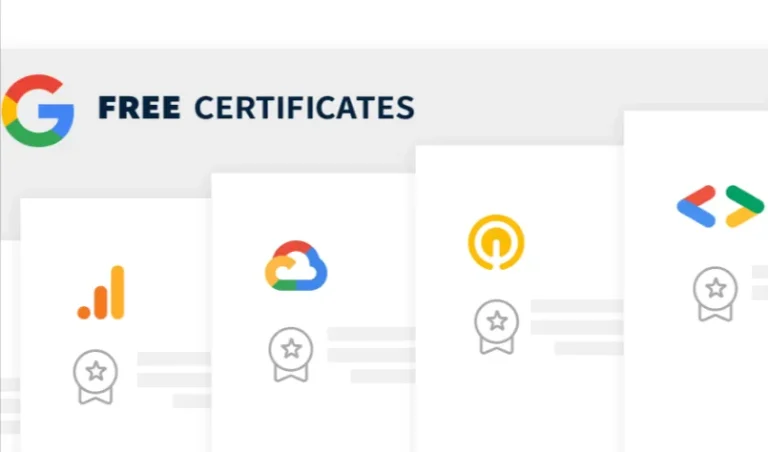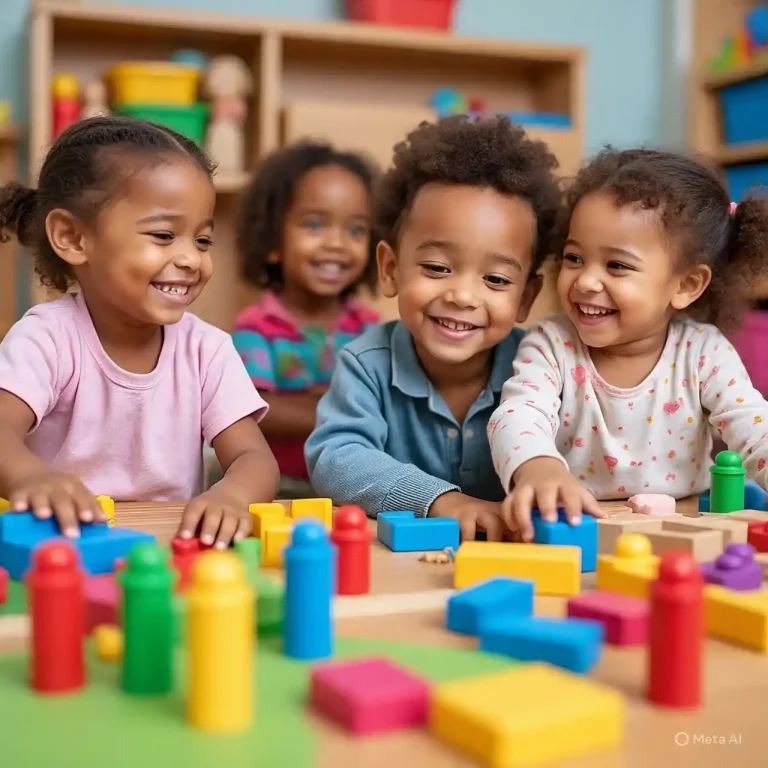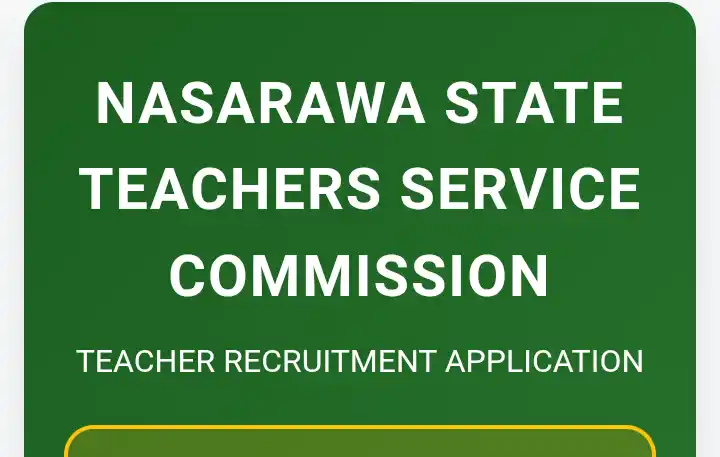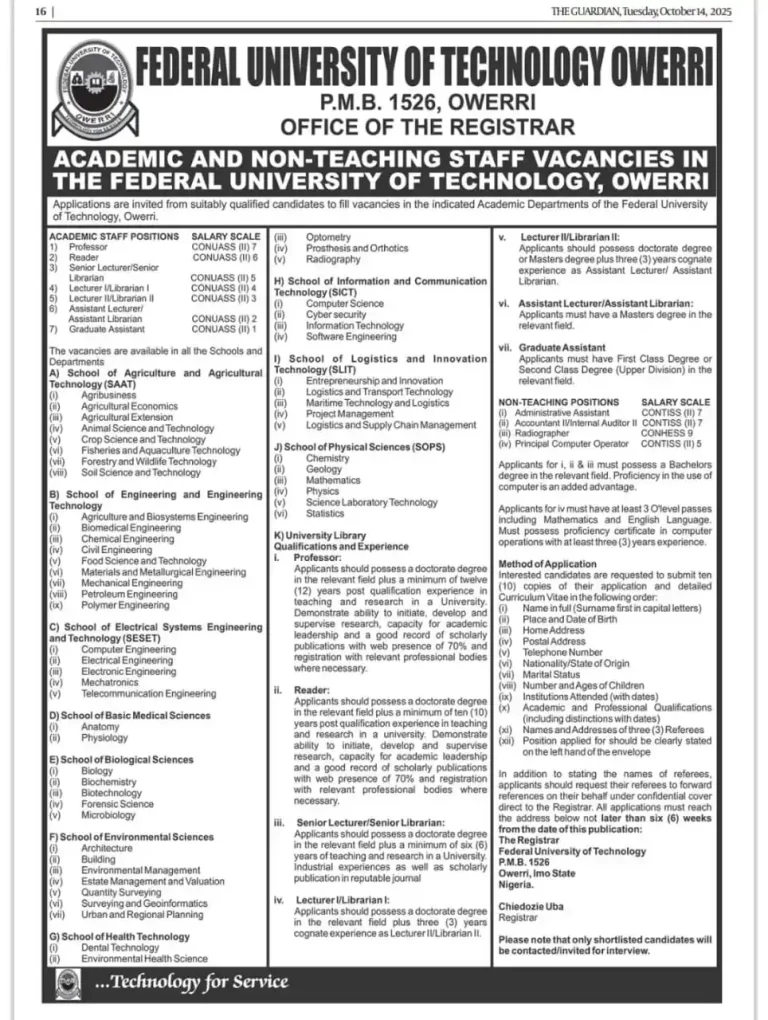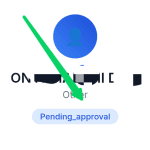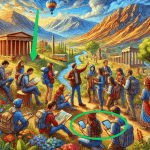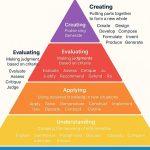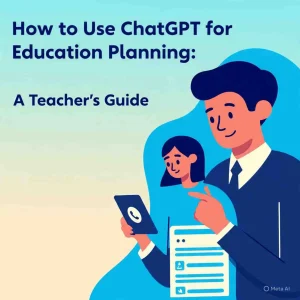
How to Use ChatGPT for Education Planning: A Teacher’s Guide Introduction
Every teacher knows that education planning takes time, energy, and focus. From drafting lesson plans to aligning them with curriculum goals, the process often feels never-ending. Teachers spend evenings grading, weekends preparing materials, and hours thinking about how to engage students in meaningful ways. This workload can leave little room for creativity or rest.
At the same time, technology has been reshaping classrooms. Over the past few years, artificial intelligence (AI) has slowly entered the world of education—not to replace teachers, but to support them. Among these tools, ChatGPT has gained attention as a practical assistant. It is not just another app; it is a conversational AI model that can generate text, answer questions, and provide suggestions in real time.
This guide will show you how to use ChatGPT for education planning. It explains what ChatGPT is, why it can be useful for teachers, practical ways to apply it, and the limitations every teacher should keep in mind. You will also see a real example of a ChatGPT-generated lesson plan, alongside best practices for using AI responsibly in the classroom.
What is ChatGPT in Education?
ChatGPT is an artificial intelligence tool developed to understand and generate human-like text based on the prompts it receives. For teachers, this means it can respond to questions, create content, or draft plans almost instantly. Unlike traditional search engines that give links, ChatGPT delivers ready-to-use text.
In education, teachers already use ChatGPT in small but significant ways. Some ask it to summarize long reading passages for students. Others request quiz questions, essay topics, or quick rubrics for grading. Many teachers experiment with it to brainstorm lesson ideas when they feel stuck.
Think of ChatGPT as a writing partner who never gets tired. It cannot take over your role as an educator, but it can lighten the heavy lifting in areas that consume time and mental energy.
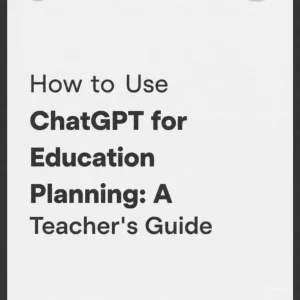
Why Use ChatGPT for Education Planning?
Education planning is not just about writing down activities. It involves aligning lessons with learning objectives, meeting curriculum standards, and making sure all students feel included. These tasks require careful thought, and they often take more time than the actual teaching.
Here are some reasons why ChatGPT is becoming a useful partner in this process:
Time-saving benefits: Teachers can ask ChatGPT to draft a lesson outline in minutes. Instead of starting with a blank page, you begin with a structured draft that you can adjust to your needs.
Personalization for students: Every classroom has learners with different abilities. ChatGPT allows teachers to request multiple variations of a lesson or activity, tailored for advanced learners or those who need extra support.
Generating creative ideas: Sometimes, planning becomes routine. ChatGPT can suggest activities, assignments, or examples that a teacher may not have considered. For example, a history teacher can ask for role-play ideas to bring historical events to life.
Curriculum mapping support: ChatGPT can assist with sequencing lessons to fit into a larger curriculum structure. By providing prompts that specify grade level, subject area, and learning objectives, teachers can receive suggestions that align with long-term goals.
Practical Uses of ChatGPT in Education Planning
While the benefits sound promising, the value lies in how teachers actually use ChatGPT. Below are practical applications that can be integrated into daily planning.
Lesson Plan Generation
Teachers often struggle with structuring lessons, especially when balancing different teaching methods. ChatGPT can draft lesson plans that include objectives, activities, assessments, and even timing breakdowns.
For example, a teacher could use this prompt:
Sample Prompt for Teachers:
“Write a 40-minute lesson plan for a Junior Secondary School 2 Mathematics class on fractions. Include objectives, class activities, and a short quiz.”
The response provides a starting point. The teacher can then edit the plan to fit classroom realities, such as available materials or student interests. This reduces the time spent staring at a blank page and allows the teacher to focus on creativity and delivery.
Curriculum Design Support
Designing a curriculum is more complex than preparing one lesson. It requires mapping out weeks or months of content to meet defined standards. ChatGPT can help teachers organize their curriculum by suggesting sequences of topics, progression from simple to complex, and ways to connect different subjects.
Sample Prompt for Teachers:
“Suggest a 12-week curriculum outline for Senior Secondary School English Literature, focusing on African novels. Include weekly themes, discussion questions, and assessment ideas.”
The AI can propose a sequence of readings, activities, and writing tasks. The teacher remains the decision-maker, but the initial framework saves valuable time.
Assessment Preparation
Tests, quizzes, and rubrics are another time-consuming aspect of teaching. ChatGPT can generate multiple-choice questions, short-answer questions, or even essay prompts based on the lesson content. Teachers can ask for difficulty levels to be adjusted for different student groups.
Sample Prompt for Teachers:
“Generate 10 multiple-choice questions with answers on photosynthesis for Senior Secondary School Biology. Make them suitable for mid-level learners.”
This allows teachers to instantly get a set of questions they can refine and use.
Resource Suggestions
Teachers often search for books, websites, or digital tools to enrich their lessons. ChatGPT can provide lists of recommended resources based on the subject or topic.
Sample Prompt for Teachers:
“Suggest five online resources for teaching Nigerian history to secondary school students. Include both websites and digital tools.”
The AI can recommend reading materials or websites, which teachers can then evaluate for accuracy and suitability.
Parent Communication
Another overlooked area where ChatGPT helps is communication with parents. Writing progress reports, feedback letters, or school updates takes time and often requires simplifying technical terms.
Sample Prompt for Teachers:
“Write a parent report explaining that a student is improving in Mathematics but still struggles with problem-solving. Keep the language encouraging and easy to understand.”
This not only saves time but also ensures the tone remains supportive and professional.
Limitations Teachers Should Know
Despite its strengths, ChatGPT is not flawless. Teachers must understand its limitations to use it responsibly.
Accuracy issues: ChatGPT sometimes provides incorrect or outdated information. It may generate content that sounds convincing but is factually wrong. Teachers must always fact-check the output before using it in class.
Need for teacher editing: AI cannot fully capture the context of your classroom. Lesson plans may need adjustment to fit the students’ cultural background, available resources, or specific learning challenges.
Not a replacement for creativity: Teaching is about human connection. AI can suggest activities, but the spark that engages students comes from the teacher’s personality, empathy, and creativity.
Ethical concerns: Over-reliance on AI could lead to reduced critical thinking in both teachers and students. There is also the risk of plagiarism if teachers or students copy AI-generated text without attribution.
Sample ChatGPT Lesson Plan
To see how ChatGPT works in practice, let’s look at an example. A teacher asks:
Sample Prompt for Teachers:
“Create a 40-minute lesson plan for JSS2 Mathematics on fractions. Include objectives, teaching methods, and a short quiz.”
ChatGPT might produce:
- Objective: Students will be able to identify and simplify fractions.
- Introduction (5 minutes): Brief explanation of fractions using everyday examples like sharing food.
- Activity (15 minutes): Group exercise where students simplify given fractions.
- Class Discussion (10 minutes): Share answers and explain methods.
- Assessment (5 minutes): Short quiz with three questions.
- Conclusion (5 minutes): Recap and homework assignment.
Compared to a traditional plan, the AI version provides structure but lacks details like specific materials, differentiation strategies, or cultural examples. The teacher must enrich it by adding context, ensuring relevance, and adapting the activities.
Alternatively you can use our readymade lesson plan samples if you don’t want to use chatgpt or other Ai in your teaching and learning. Our lesson plan guide can also help you in writing your lesson plan
Best Practices for Using ChatGPT in Education Planning
To maximize the value of ChatGPT, teachers should follow some best practices.
Always fact-check: Never assume the output is 100% correct. Cross-check with textbooks, curriculum guides, and trusted sources.
Use age-appropriate prompts: The more specific your prompt, the better the result. Always include grade level, subject, and learning objectives when asking for lesson plans.
Combine AI with teacher insight: Think of ChatGPT as a draft generator, not a final answer. Add your own expertise, examples, and classroom strategies to make lessons engaging.
The Future of ChatGPT in Education
Looking ahead, ChatGPT and similar AI tools are likely to integrate more deeply into education. One area is Learning Management Systems (LMS), where AI can automatically suggest activities or generate reports. Another is personalization, where AI adapts content to each student’s learning style.
In African classrooms, where teacher shortages and large class sizes are common, AI may provide support by automating repetitive tasks. However, careful attention must be given to access, training, and ethical concerns to ensure AI is a tool for inclusion, not inequality.
Conclusion
ChatGPT is not here to replace teachers. It is a partner that can reduce workload, spark creativity, and support lesson planning. By learning how to use ChatGPT for education planning, teachers can save time while maintaining control over content and creativity.
The benefits of ChatGPT in lesson plan writing are clear, but they come with responsibilities. Teachers must edit, adapt, and fact-check the output. When used wisely, ChatGPT allows educators to focus on what truly matters: connecting with students and creating meaningful learning experiences.

